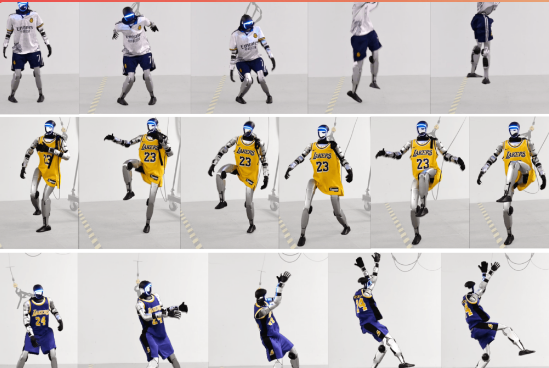The development of robotics has always faced the gap between the simulated environment and the real world. Nvidia GEAR Laboratory and Carnegie Mellon University research team recently jointly developed a new framework called ASAP, aiming to close the gap and make significant progress.
In the development of robotics, the gap between simulated environment and the real world has always been a major challenge. Recently, Nvidia GEAR Laboratory and Carnegie Mellon University research team jointly developed a new framework called ASAP (Aligning Simulation and Real Physics), aiming to close the gap. The system has made significant progress in reducing robot simulation and real-life motion errors, and is able to reduce motion errors by about 53%, which has a significant advantage over existing methods.
The workflow of the ASAP framework is divided into two stages. First, the robot is trained in a virtual environment, and then uses a special model to deal with real-world differences. This model can learn and adjust the variation between virtual and actual motion, enabling more precise action transformations. Through this system, the robot can directly transfer complex movements, such as jumping and kicking, from simulated environments to reality.

In actual testing, the research team used the Unitree G1 humanoid robot, which successfully demonstrated a variety of flexible movements, such as a forward jump of more than one meter. Tests show that the ASAP system significantly outperforms other existing methods in motion accuracy. To demonstrate the potential of the system, researchers even let the robot imitate the movements of famous athletes such as Cristiano Ronaldo, LeBron James and Kobe Bryant. However, some hardware limitations were also exposed during the experiments, the robot's motor often overheated when performing dynamic movements, and when collecting data, two robots were damaged.
This is just the beginning, the research team said. In the future, the ASAP framework may help robots learn more natural and diverse movements. To facilitate more researchers' participation, they have published the code publicly on GitHub, encouraging other researchers to further explore and develop based on the framework.
Key points:
The ASAP framework developed by the research team can reduce the error of about 53% between robot simulation and real motion.
By training in a simulated environment and combined with special models, ASAP can effectively adjust the robot's motion performance in reality.
During the test, the robot successfully imitated the movements of several sports stars, but during the experiment, there were problems of hardware overheating and equipment damage.
The launch of the ASAP framework has brought new hope to the development of robotics technology and is expected to be applied in more fields in the future.